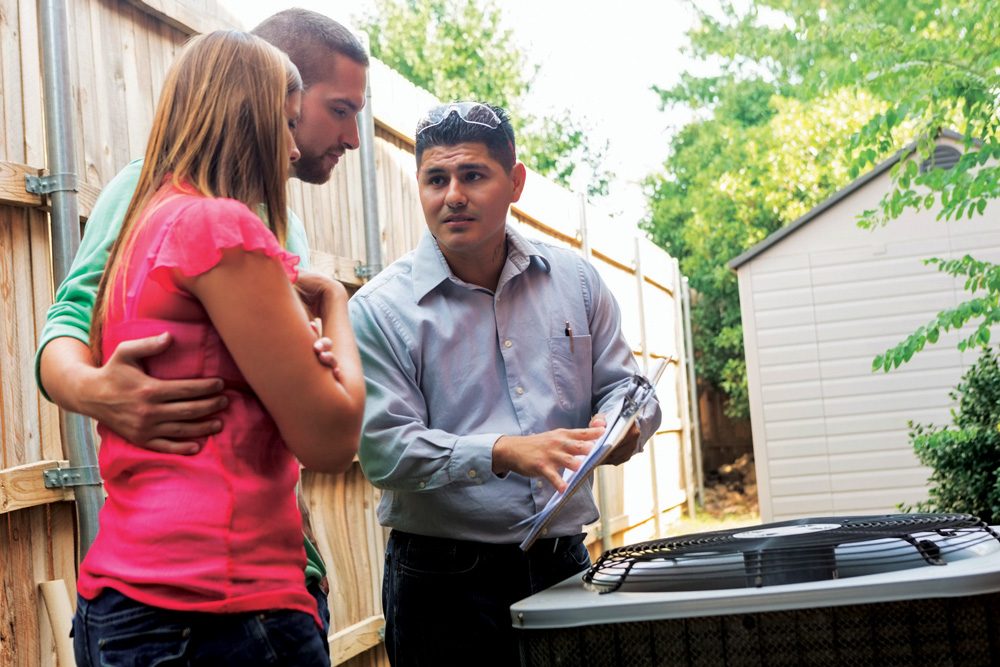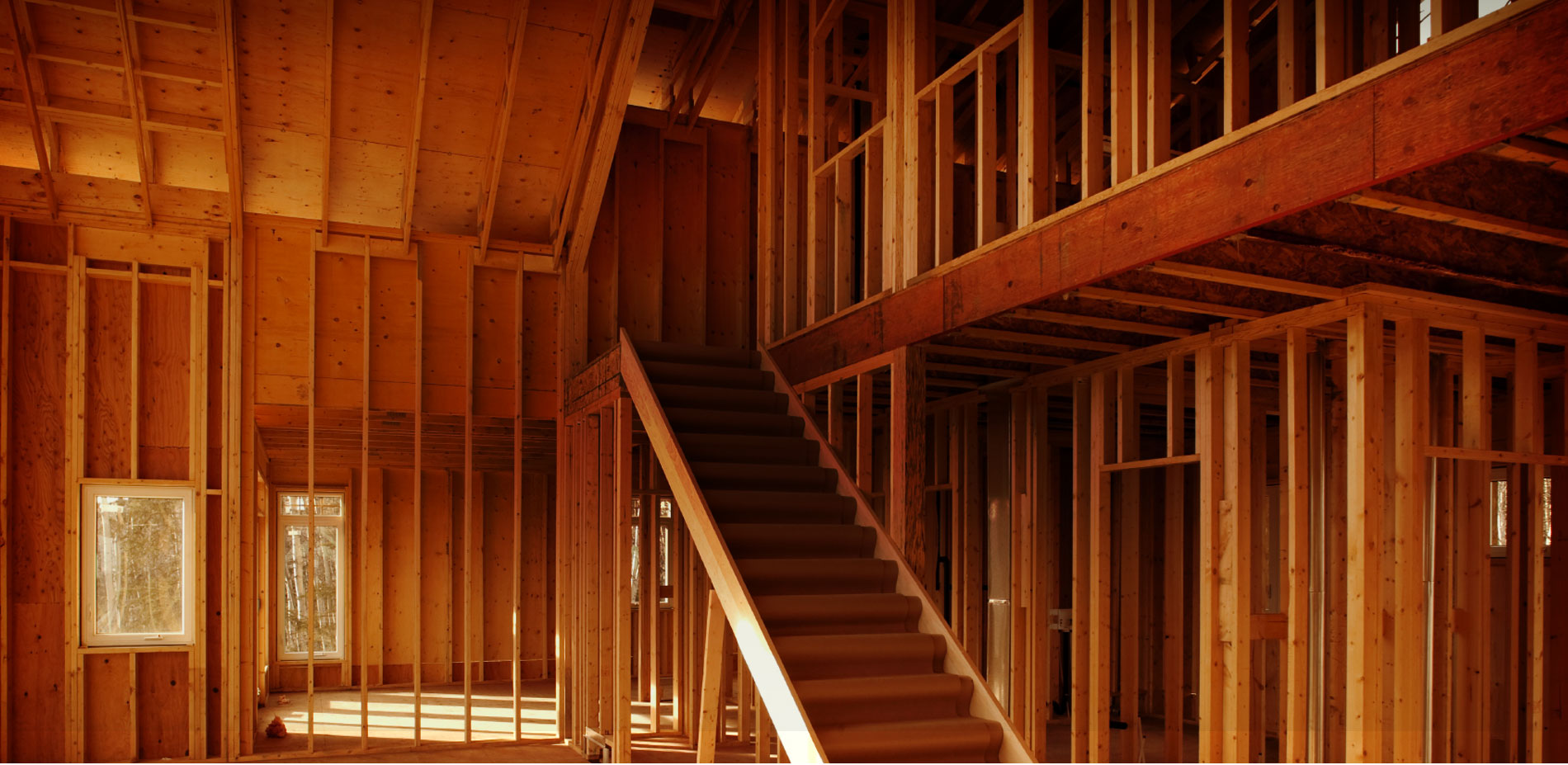Before Moving In: The New Home Walk-Through
www.nahb.org and www.newhomesource.com
 Before a homeowner goes to settlement on the purchase of a newly constructed home, you and the homebuyer should do a walk-through to conduct a final inspection. This walk-through will provide an opportunity to spot items which may need to be corrected or adjusted, educate the buyer about the way the new home works and what their responsibilities are, and answer any questions the homebuyer doesn't understand.
Before a homeowner goes to settlement on the purchase of a newly constructed home, you and the homebuyer should do a walk-through to conduct a final inspection. This walk-through will provide an opportunity to spot items which may need to be corrected or adjusted, educate the buyer about the way the new home works and what their responsibilities are, and answer any questions the homebuyer doesn't understand.
How Things Operate
When you buy a new appliance such as a washing machine, you usually have to read the instructions before you understand how to use all of the features. With a new house, the buyer will be overwhelmed with new appliances, systems, and maybe even ‘smart’ features. Not only will it help immensely if someone takes the time to show them how to operate all of these components and gadgets, but it shows that you care about the home and take pride in your finished craftmanship.
Maintenance Responsibilities
Part of your walk-through should be educating the buyer about maintenance and upkeep responsibilities. When you provide your buyers with a ten-year warranty, workmanship and materials are covered for one year. However, such warranties do not cover problems that develop because of failure to perform required maintenance. RWC/HOME of Texas provides a clearly written warranty booklet explaining what’s covered, what’s not covered, the responsibilities of new homeowners, and actions required citing specific guidelines and standards.
Builder Visits During the Year
Each builder is different, however, typically builders schedule two visits during the first year — one near the beginning and the other near the end — to make necessary adjustments and to perform work of a non-emergency nature. Explain to your client that you won’t be rushing out immediately for a problem such as a nail pop in your drywall. Such problems occur because of the natural settling of the house and are best addressed in one visit near the end of the first year.
Your Inspection Checklist
 Creating a checklist when inspecting the house is key to organization and cognizance. The list should include everything that needs attention, and you and the homebuyer should agree to a timetable for repairs. Explain to the buyer that it’s best to remedy problems before they move in, because it is easier to work in an empty house. However, some items may have to be corrected after move-in. For instance, if the walk-through is in the winter, landscaping adjustments may be delayed until spring.
Creating a checklist when inspecting the house is key to organization and cognizance. The list should include everything that needs attention, and you and the homebuyer should agree to a timetable for repairs. Explain to the buyer that it’s best to remedy problems before they move in, because it is easier to work in an empty house. However, some items may have to be corrected after move-in. For instance, if the walk-through is in the winter, landscaping adjustments may be delayed until spring.
It is important to be thorough and observant. Examine all surfaces of counters, fixtures, floors and walls for possible damage. Sometimes disputes arise because a buyer may discover a gouge in a countertop after move-in, and there is no way to prove whether it was caused by the builder's workers or the buyer's movers. Many builders ask their buyers to sign a form at the walk-through stating that all surfaces have been inspected and that there is no damage other than what has been noted on the walk-through checklist.
In preparation for the walk-through and to ensure everything goes smoothly and efficiently, educate your homebuyers with these walk-through “Dos and Don’ts”.
DO
- Make a list in advance of any questions about maintenance/warranty procedures.
- Bring pens, paper, a clipboard, digital camera or phone to take notes and photos.
- Bring the purchase agreement, RWC/HOME sample warranty book, customer service manual, selection sheets, diagrams and landscape and pool plans, if applicable.
- Wear clothing that is appropriate for walking a construction site, including closed-toe shoes.
- Park in the street, not the driveway, especially if the home is still under construction.
- Verify the expected dates for completion of repairs, if any are needed, and get a copy of the completed punch list before you leave the site.
DON’T
- Be late for the walkthrough. Builders have busy schedules and may have appointments with other customers on the same day.
- Bring pets, children or other family members and friends. You’ll need to devote your full attention to what is being presented.
- Rush through the walkthrough. Take your time and be thorough.
- Be shy about asking a lot of questions.
On that note, the homebuyer will most likely ask a lot of questions during the walk-through and take notes on the answers. Be patient. This is the dream home they’ve been anxiously waiting to move into for months and they want to make sure everything is up to par and in perfect working order. It is important to view the walk-through as a positive learning experience that will enhance the enjoyment of your client’s new home for years to come. And furthermore, a genuine, caring and thorough home builder will get all the praise and kudos through word of mouth - the most powerful (and free) form of advertising!



